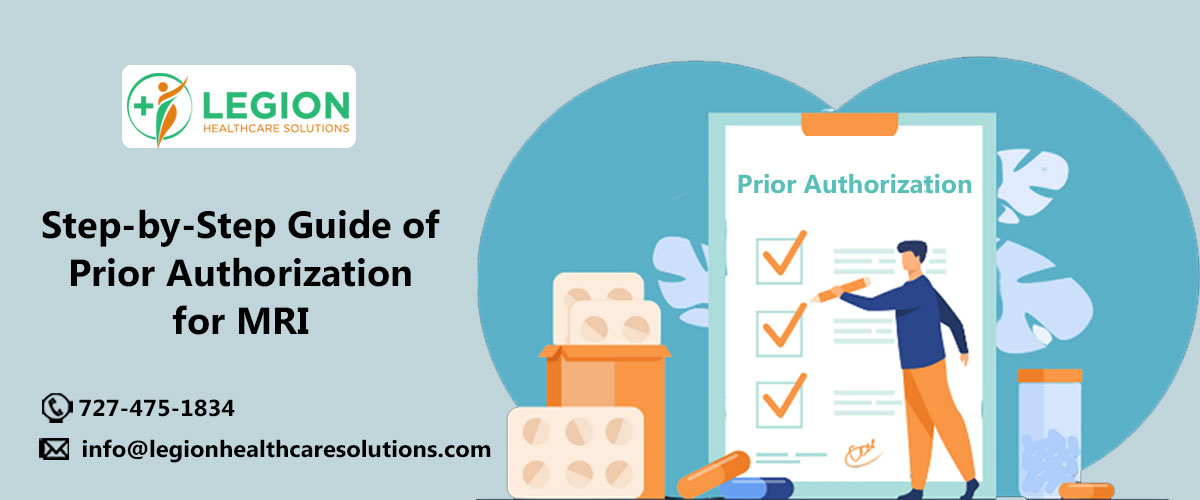
Step-by-Step Guide of Prior Authorization for MRI
Navigating the prior authorization process for medical procedures can be a complex and time-consuming task for healthcare providers. When it comes to magnetic resonance imaging (MRI), obtaining prior authorization is crucial to ensure seamless access to this valuable diagnostic tool. In this step-by-step guide, we will walk you through the process of prior authorization for MRI, providing healthcare practices with a clear roadmap to streamline their administrative workflows. From patient evaluation and insurance verification to completing the necessary forms and gathering supporting documentation, this guide aims to empower healthcare providers with the knowledge and tools to successfully navigate the prior authorization journey, ultimately improving patient care and optimizing reimbursement. By following this comprehensive guide, healthcare professionals can confidently navigate the prior authorization process and focus on delivering exceptional care to their patients.
Step-by-Step Guide of Prior Authorization for MRI
Step 1: Patient Evaluation and Medical Necessity Assessment
The first step in the prior authorization process for MRI is patient evaluation. The healthcare provider assesses the patient’s medical history, symptoms, and clinical findings to determine the necessity of an MRI scan. They consider factors such as the patient’s condition, previous diagnostic tests, and treatment plans.
Step 2: Identify the Patient’s Insurance Coverage
Once the medical necessity of an MRI is established, the next step is to identify the patient’s insurance coverage. The healthcare provider reviews the patient’s insurance policy to determine if prior authorization is required for MRI scans and the specific requirements of the insurance company.
Step 3: Obtain the Prior Authorization Form
The healthcare provider obtains the prior authorization form from the patient’s insurance company. This form typically includes patient information, diagnosis, procedure details, and supporting documentation requirements.
Step 4: Complete the Prior Authorization Form
The healthcare provider completes the prior authorization form accurately and thoroughly. They provide all the necessary information, including the patient’s demographic details, referring physician information, diagnosis codes, CPT codes for the MRI procedure, and any additional documentation required to support medical necessity.
Step 5: Gather Supporting Documentation
To support the prior authorization request, the healthcare provider gathers relevant medical documentation. This may include clinical notes, imaging reports, lab results, previous treatment records, and any other relevant information that demonstrates the need for an MRI.
Step 6: Submit the Prior Authorization Request
Once the prior authorization form and supporting documentation are complete, the healthcare provider submits the request to the patient’s insurance company. This can be done electronically through an online portal, fax, or mail, depending on the insurer’s preferred method.
Step 7: Follow-Up on the Authorization Request
After submitting the prior authorization request, it is essential to follow up with the insurance company to ensure the progress of the request. The healthcare provider may need to provide additional information or address any questions or concerns raised by the insurance company during the review process.
Step 8: Authorization Approval or Denial
The insurance company evaluates the prior authorization request, considering medical necessity, policy guidelines, and coverage criteria. They will either approve or deny the request. If approved, the authorization will include details such as the number of approved sessions, specific codes, and validity period. In the case of denial, the insurance company provides reasons for the decision.
Step 9: Communicate the Authorization Status to the Patient
Once the insurance company provides a response, the healthcare provider communicates the authorization status to the patient. If the prior authorization is approved, the patient is informed about the scheduling process for the MRI scan. In the case of denial, the provider discusses alternative options with the patient and may initiate an appeal if appropriate.
Step 10: Perform the MRI Procedure
Upon receiving the prior authorization approval, the healthcare provider schedules and performs the MRI procedure according to the authorized parameters. The imaging center or facility follows the approved codes, sessions, and any other instructions provided by the insurance company.
By following these steps, healthcare practices can navigate the prior authorization process for MRI scans more effectively, ensuring appropriate utilization of resources and facilitating timely patient care.
To summarize, prior authorization for MRI plays a crucial role in the healthcare landscape, ensuring appropriate utilization of resources and controlling costs. By partnering with Legion Healthcare Solutions, healthcare practices can streamline their workflows, enhance efficiency, and focus on delivering exceptional patient care. Legion’s expertise in navigating insurance requirements and payer policies simplifies the prior authorization process, reducing administrative burdens and increasing the likelihood of successful approvals. Embrace the power of prior authorization for MRI with Legion and experience a seamless and profitable healthcare journey. Contact us today at 727-475-1834 or email us at info@legionhealthcaresolutions.com to learn more about our prior authorization services.
